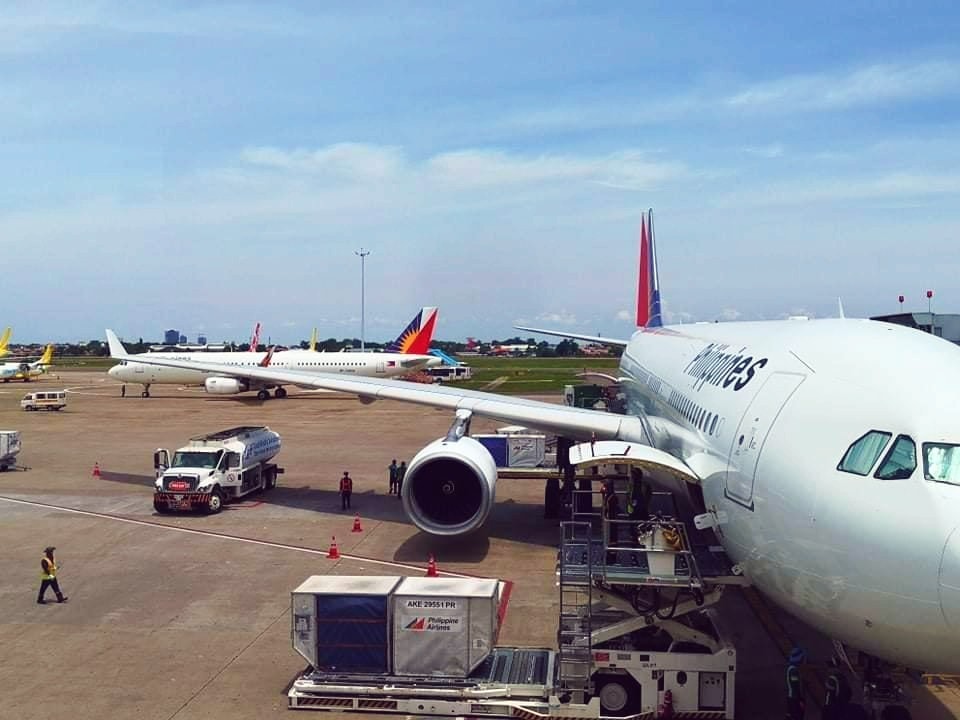AviationUpdatesPH.com recently had an inside look at Cebu Pacific’s Airline Operations Center, where the low-cost carrier manages and dispatches thousands of flights weekly around the globe.
As previously highlighted in our recent feature article, we discussed about how Cebu Pacific’s Network Control Center (NCC) controls every aspect of the airline’s operations in 59 airports they fly to, locally and internationally.
At the NCC, AUP managed to ask around how the low-cost carrier adapts through unexpected flight disruptions. In this article, let’s delve into how Cebu Pacific navigates challenges and keeps passengers flying.
Philippine Airspace Shutdown: A Test of Mettle
Naturally, one of the first things that came into my mind about flight disruptions is the great 2023 New Year fiasco, which practically emptied the Philippine airspace for a day.
The unprecedented Philippine airspace shutdown on January 1, 2023, due to a power outage at the Air Traffic Management Center, severely impacted flight operations across the country. This means that planes could not communicate with Manila Control—the main facility that governs the safe passage of flights transiting through the Philippine airspace.
With communication between planes and air traffic controllers disrupted, the majority of Cebu Pacific’s flights were diverted across all airports in its network. No flights were allowed to operate above the Philippines until the issues were fixed, given that the loss of communication was a critical safety risk.
Cebu Pacific, with its hundreds of daily flights, was heavily affected.
Michael Brady, Cebu Pacific’s Group Director for NCC & Operations Support, highlighted the initial uncertainty surrounding the situation’s severity.
As part of the protocols, the airline’s crisis team swiftly assembled to assess the impact and gain a clearer understanding. The team had to determine the number of flights that are affected, and the number of passengers that will potentially be impacted with the airspace closure.
The airline then worked through the information that it subsequently received and began crafting a game plane once flights are allowed to resume again.
Brady emphasized prioritizing unaffected flights to prevent a domino effect of delays and cancellations, a standard approach for any disruption, including red lightning alerts or adverse weather.
Weathering the Storm: Proactive Measures
Cebu Pacific proactively mitigates weather-related disruptions, especially those caused by red lightning alerts.
Closely monitoring weather forecasts allows for precautionary measures, such as increasing fuel load for flights expected to encounter challenging weather systems.
This accounts for potential missed approaches and extended holding times, ensuring safe arrival despite adverse conditions.
Overcoming Fleet Challenges
Increased groundings of Airbus A320neo aircraft with Pratt & Whitney’s PW1100G engines posed a challenge for Cebu Pacific.
To ensure that it could operate its flight schedules reliably, Cebu Pacific elected to reduce frequencies early on. However, they have since taken steps to augment their fleet by adding more Airbus A320 jets, including older-generation CEO models.
Additionally, two Airbus A320 aircraft have been damp-leased from Bulgaria Air, servicing routes from Manila to Cebu and Davao since January 2024.
Cebu Pacific is in the midst of making a decision for an aircraft order of as much as 150 narrowbody planes, which it says would be the largest in Philippine aviation history. The airline has submitted request for proposals
Ensuring Operational Continuity
Three standby aircraft, two in Manila and one in Cebu, play a crucial role in minimizing delays and ensuring operational continuity.
If technical issues arise or unforeseen circumstances like medical emergencies necessitate diversions, these standby aircraft can be swiftly deployed to transport passengers to their destinations.
The standby aircraft to fleet size ratio of Cebu Pacific is one of the highest in the world, as Brady shared that European airlines typically allot three standby planes for a fleet of hundreds of aircraft.
For Cebu Pacific, it maintains that same number of standby Airbus A320 aircraft for a fleet count north of 50 planes. This ensures minimal disruptions for the low-cost carrier’s passengers.
Cebu Pacific’s Commitment to Smooth Skies
Cebu Pacific’s comprehensive approach to managing flight disruptions underscores its dedication to passenger satisfaction and operational efficiency.
By combining proactive planning, flexible fleet management, and a dedicated crisis response team, the airline navigates challenges and keeps passengers flying, even when faced with the unexpected.
























Leave a comment